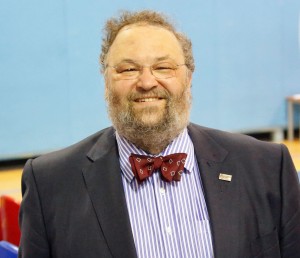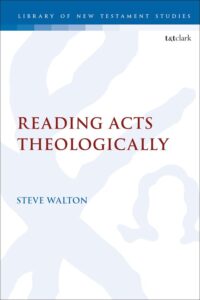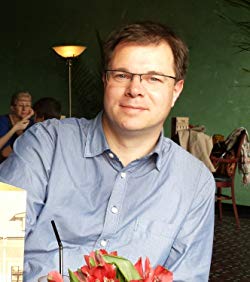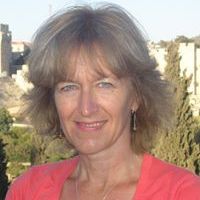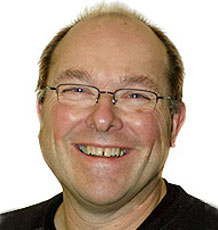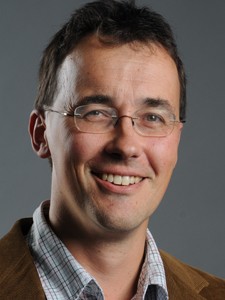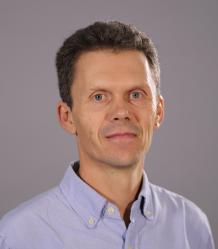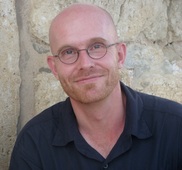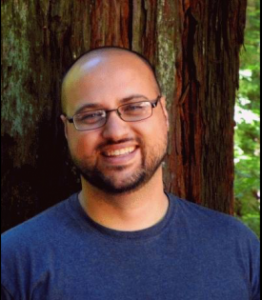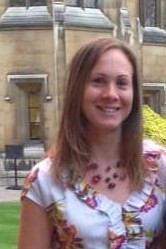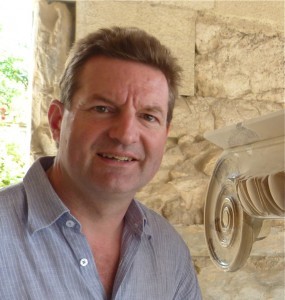 The ‘Cities of God?’ conference, held within the Centre for the Social-Scientific Study of the Bible at St Mary’s University, Twickenham last week was excellent, with fine papers, stimulating conversation, and enjoyable socialising. Here are some summaries of the papers and the conversations. The abstracts are still available here. In due course, videos of some of the papers will be available online, and I will blog about that when they’re ready.
The ‘Cities of God?’ conference, held within the Centre for the Social-Scientific Study of the Bible at St Mary’s University, Twickenham last week was excellent, with fine papers, stimulating conversation, and enjoyable socialising. Here are some summaries of the papers and the conversations. The abstracts are still available here. In due course, videos of some of the papers will be available online, and I will blog about that when they’re ready.
The conference addressed two central questions, and had one significant distinctive. The two questions were: (i) how did the urban environment(s) of the first century affect and interact with the development of earliest Christianity? (ii) how did the earliest Christians think about, and reflect and theologise on the urban setting? The distinctive was that this was an interdisciplinary conversation, including classicists, New Testament scholars, and human geographers—and some of the interesting insights and ideas emerged as papers addressed our questions from these different disciplinary angles.
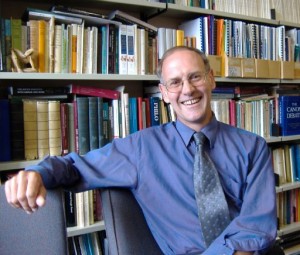 Pride of place should go to Professor Paul Trebilco (University of Otago, New Zealand) who gave a fascinating keynote paper ‘Engaging—or Not Engaging—the City: Reading 1‑2 Timothy and the Johannine Letters in the City of Ephesus’ in which he argued that reading the Timothy and Johannine correspondences in the setting of Ephesus around the same time (late first century) showed two different Christian approaches to city life. 1 and 2 Timothy present a strategy of engagement, in which believers pray for the authorities, are concerned about the opinion outsiders hold of them, do good works for ‘all’, and adopt the language of the city in reflecting on Jesus (epiphany language, saviour, Lord) and in the virtue of εὐσέβεια. There is critique of the city in these letters too, in the assertion of the unique glory of God and the one mediator Jesus Christ, in criticism of the rich, and the contrast of ‘the present age’ and ‘the age to come’. By contrast, the Johannine letters, although they show signs of some involvement in wider city culture, are dualistic in setting ‘the world’ sharply over against the believing community—the world hates believers, and is a threat to believers in maintaining their single-minded devotion to Christ. It is not that they are in a Qumran-like withdrawal from the world—there are features in the letter which make clear that they live among non-believers—but rather that they are to see themselves as ‘out of God’ (ἐκ τοῦ θεοῦ) (1 John 4:4-6; 5:19) but ‘in this world’ (1 John 4:17). Professor Trebilco suggested that the two believing groups both lived in Ephesus (a massive city of 200,000+) around the same period and probably knew each other, but took rather different Christian approaches to engagement with the city.
Pride of place should go to Professor Paul Trebilco (University of Otago, New Zealand) who gave a fascinating keynote paper ‘Engaging—or Not Engaging—the City: Reading 1‑2 Timothy and the Johannine Letters in the City of Ephesus’ in which he argued that reading the Timothy and Johannine correspondences in the setting of Ephesus around the same time (late first century) showed two different Christian approaches to city life. 1 and 2 Timothy present a strategy of engagement, in which believers pray for the authorities, are concerned about the opinion outsiders hold of them, do good works for ‘all’, and adopt the language of the city in reflecting on Jesus (epiphany language, saviour, Lord) and in the virtue of εὐσέβεια. There is critique of the city in these letters too, in the assertion of the unique glory of God and the one mediator Jesus Christ, in criticism of the rich, and the contrast of ‘the present age’ and ‘the age to come’. By contrast, the Johannine letters, although they show signs of some involvement in wider city culture, are dualistic in setting ‘the world’ sharply over against the believing community—the world hates believers, and is a threat to believers in maintaining their single-minded devotion to Christ. It is not that they are in a Qumran-like withdrawal from the world—there are features in the letter which make clear that they live among non-believers—but rather that they are to see themselves as ‘out of God’ (ἐκ τοῦ θεοῦ) (1 John 4:4-6; 5:19) but ‘in this world’ (1 John 4:17). Professor Trebilco suggested that the two believing groups both lived in Ephesus (a massive city of 200,000+) around the same period and probably knew each other, but took rather different Christian approaches to engagement with the city.
Three papers explored particular aspects of the Roman imperial setting of cities. Professor David Gill (University Campus, Suffolk), a classical archaeologist with strong interests in the New Testament, gave a splendid introduction to early Christianity in the contexts of Roman colonies in the eastern empire with excellent slides (mostly his own photographs).
Dr Volker Rabens (Friedrich-Schiller-Universität, Jena, Germany) sketched Paul’s mission strategy in the urban landscape of the first century, arguing that Paul did not have a ‘master plan’, other than a general aim to take the gospel to a wide range of cities where it had not been heard ‘from Jerusalem to Illyricum’ (Romans 15:19-20). He was sceptical of grand plans, such as those of Rainer Riesner and Tom Wright, who argue for particular influences on Paul’s movements, although he accepted Riesner’s view that a retrospective reading of Isaiah 66 enabled Paul to interpret his gospel travels. Dr Rabens recognised that Paul wanted to win people to faith in Christ, and then to see them ‘become the gospel’ (a phrase borrowed from Michael Gorman)—and that desire led to second, third and more visits to that end.
Professor Joan Taylor (King’s College London) presented a fine study of Caesarea Maritima, drawing on archaeological work which has been done in recent years to provide a good portrait of the city. I was struck by the dominance of the imperial temple in the city’s geography—which Acts does not mention, of course—and the statement it made of what mattered in the city.
Four papers brought perspectives from or influenced by modern human geography. Professor Paul Cloke (University of Exeter), himself a human geographer, outlined the development of the theme of ‘spiritual landscapes’ among geographers, emphasising the way faith in the invisible power of God is seen in events and faith in particular places. He applied this line of thinking to Colossae, particularly in reading the letter to the Colossians, influenced by Brian Walsh and Sylvia Keesmat’s Colossians Remixed, and identified Colossae as a city marked by the visible and invisible powers of empire, recognised in control of freedom, economics, and culture in a way that shaped both urban spaces and their apprehension by city-dwellers. This threat Colossians meets by recognising other dimensions of kingdom power and worship drawing on the grace and peace of Christ.
Dr Matthew Sleeman (Oak Hill College, London), who has PhDs in both human geography and New Testament, combined his two fields in a fascinating study of Paul’s final visit to Jerusalem in Acts 21. Using ideas from legal geography, he spoke of the ‘nomosphere’ where life is given norms and structure by particular perspectives and visions of the city. He read Acts 21 as portraying a clash of such visions, showing that this clash is both ‘needed and needled’ by Paul’s mission among both Jews and Gentiles—and that Jerusalem, where Luke’s story in Acts begins, is the critical locale for this clash.
Professor David Horrell (University of Exeter) is working on the International Critical Commentary on 1 Peter, and gave us a foretaste of his thinking in looking at what we can say about the location of 1 Peter when we recognise that we cannot be completely confident of the location of ‘Babylon’ (1 Peter 5:13) and the diaspora of believers (1 Peter 1:1). Professor Horrell argued cogently that the more significant issue is how the locations involved are constructed, and he considered the ‘symbolic geography’ of the cities along with the portrait of the believing communities as a temple of living stones (1 Peter 2:5). A fascinating taster for more that is to come!
Wei-Hsien Wan (PhD student, University of Exeter) explored 1 Peter further, focusing on the theme of displacement. The author characterises his readers as ‘resident aliens and strangers’ (1 Peter 2:11), and this constitutes (he argued) an act of spatial production—it challenges Rome’s claims of power, notably expressed in the Anatolian imperial cults, and offers an ‘alternative spatial imagination’ which provides believers with a way to understand and validate their experience of non-belonging in Roman Asia Minor.
Three papers opened up particular aspect of the Jewish/Judaean culture and settings of the first century. Dr Jutta Leonhardt-Balzer (University of Aberdeen) opened up Philo’s thinking, as an urban hellenised Jewish living in Alexandria, and compared and contrasted his view of the city with Paul’s. Philo’s dislike of cities is interesting, particularly given that he was a city-dweller and regarded Jerusalem as the ‘home city’ of the Jewish people, and Dr Leonhardt-Balzer argued that a similar view can be found in Paul’s view of that city, although not at all uncritically.
Professor Anders Runesson (recently appointed to University of Oslo, Norway) offered an interesting and engaging discussion of Jerusalem in Matthew, comparing and contrasting it with Luke-Acts. He argued that while Jerusalem for Matthew is and remains God’s City, he understands the city and its temple to have become defiled, requiring, in contrast with Luke, his disciples to leave for Galilee after Jesus’ resurrection. Prof. Runesson discussed in particular the possibility that such Matthean traditions could be linked to the presence of Jewish followers of Jesus in Galilee, a part of the nascent movement whose existence is suppressed in the narratives of Luke-Acts.
Dr Anthony Le Donne (United Theological Seminary, Dayton, Ohio, USA) entered the recent debate over whether ‘Jews’ or ‘Judaeans’ is the appropriate term to use to translate Ἰουδαῖος in the first century. He outlined the recent discussion, particularly the debate between Steve Mason and others (who argue for ‘Judaean’ as avoiding anachronism) and Adele Reinhartz and others (who prefer ‘Jew’ as preserving the presence of such people in history). He argued for a both/and view (Jew/Judaean) on the basis that the city of Jerusalem had a variety of meanings for different groups of Jews/Judaeans in different settings around the Roman empire.
Finally, five other papers highlighted different aspects of cities and the way cities are seen (in the ancient world and in modern scholarship). Helen Morris (PhD student, St Mary’s University, Twickenham) addressed the debate over Paul’s view of the city in 1 Corinthians 12:12-31, where ‘body’ language for the believing community reflects usage for the civic community. She considered whether such language might treat the city as friend or foe (conforming or subverting it, respectively), and argued elegantly for an alternative view, that Paul uses the city as a foil in his discussion of the church as the body of Christ, especially arguing that the discussion of the resurrection in 1 Corinthians 15:20-28, where bodies are transformed in the eschaton, relativises the status of the city in the present. Instead, Paul presents the church, as Christ’s body, as a counter-community and an anticipation, albeit partial, of what is to come at the End.
Dr Ian Paul (University of Nottingham) presented a very interesting discussion of the seven cities of Revelation 2–3, along with two contrasting cities (Jerusalem and Rome) in the same book. He noted the way that a variety of scholars have read the archaeological evidence of the seven cities to interpret the seven ‘letters to the churches’ (which he noted are not letters—the whole book is a letter), and argued that this may not be the most important way to read these cities. Rather, the ideological setting is crucial to understanding the ways of Christian engagement with the cities which Revelation commends—how will readers live out their Christian lives in the tension between the heavenly Jerusalem and the earthly power of Rome. The move ‘from social reality to theological depiction’, he argued, is critical to seeing how Revelation shapes its readers’ perceptions and their response to the urban world.
In my paper, I sought to examine how the language of heavenly citizenship (Philippians 3:20-21) should be understood in the context of its letter, where citizenship language is also used of earthly lifestyle as a citizen of Philippi (Philippians 1:27), a Roman colony. It is striking that it is in Philippi that Paul first plays the card of his Roman citizenship (Acts 16:11-40) in order to challenge the authorities. I argued that Paul sees a tension between the two citizenships, but always puts heavenly citizenship in the driving seat, so that Christian behaviour in the public sphere of the city should demonstrate appropriate (earthly) citizenly deportment for the sake of the heavenly citizenship into which believers wish to draw others.
My excellent colleague, Professor Chris Keith (St Mary’s University, Twickenham) took up the question of whether literacy is a feature of ancient urban areas because of their urbanity. He accepted that ancient urban locations do display larger number of people who can read and/or write, but argued, based on a study of the Shepherd of Hermas and Justin’s First Apology, that the literate status of Christians in late first-century and early second-century Rome derives from social class and wealthy, not the urban setting as such. Thus it is members of wealthy households, including slaves, who are literate.
Dr Piotr Ashwin-Siejkowski (King’s College London) took us further into the second century in exploring the development of Christianity in Alexandria. He proposed that the cultural setting of the city, with libraries and a strong intellectual heritage, had a major impact on the exegetical traditions of Christianity in that city (e.g. the Gospel of the Hebrews, the Gospel of the Egyptians, the Epistle of Barnabas, the Teaching of Silvanus). In particular, the combination of Jewish and Graeco-Roman philosophical and theological thinking was generative for such developments.
In sum, this was a fine conference with very good papers and thoughtful interaction between presenters and with the audience. A book is forthcoming, edited by Paul Trebilco, David Gill and me, hopefully late in 2016—don’t miss it!
